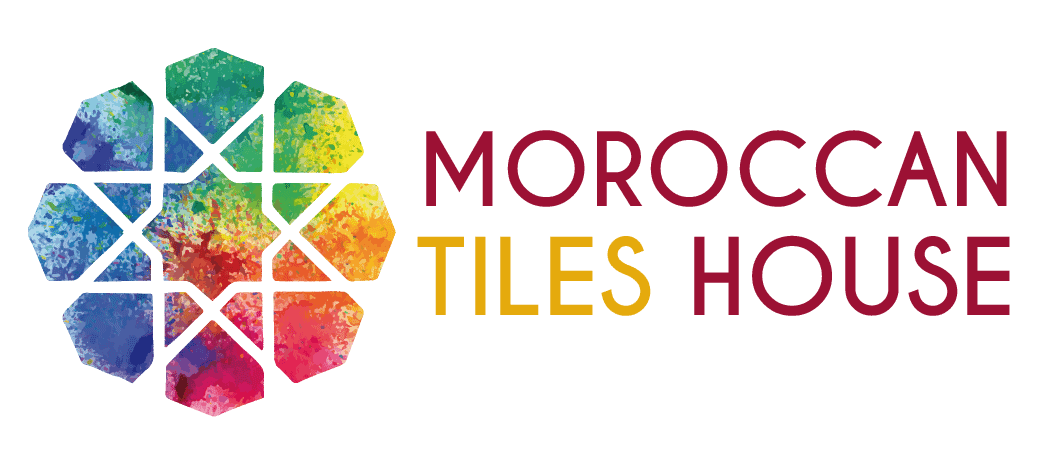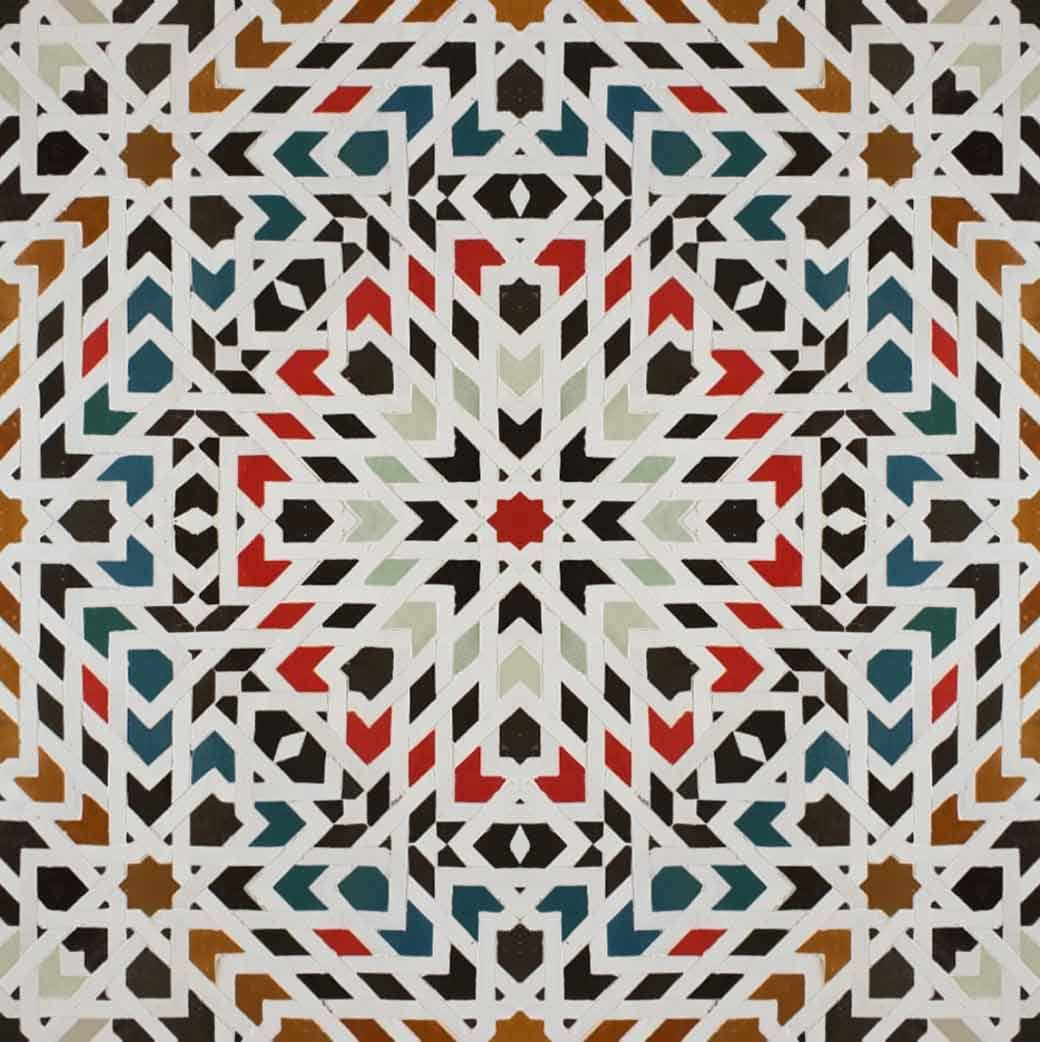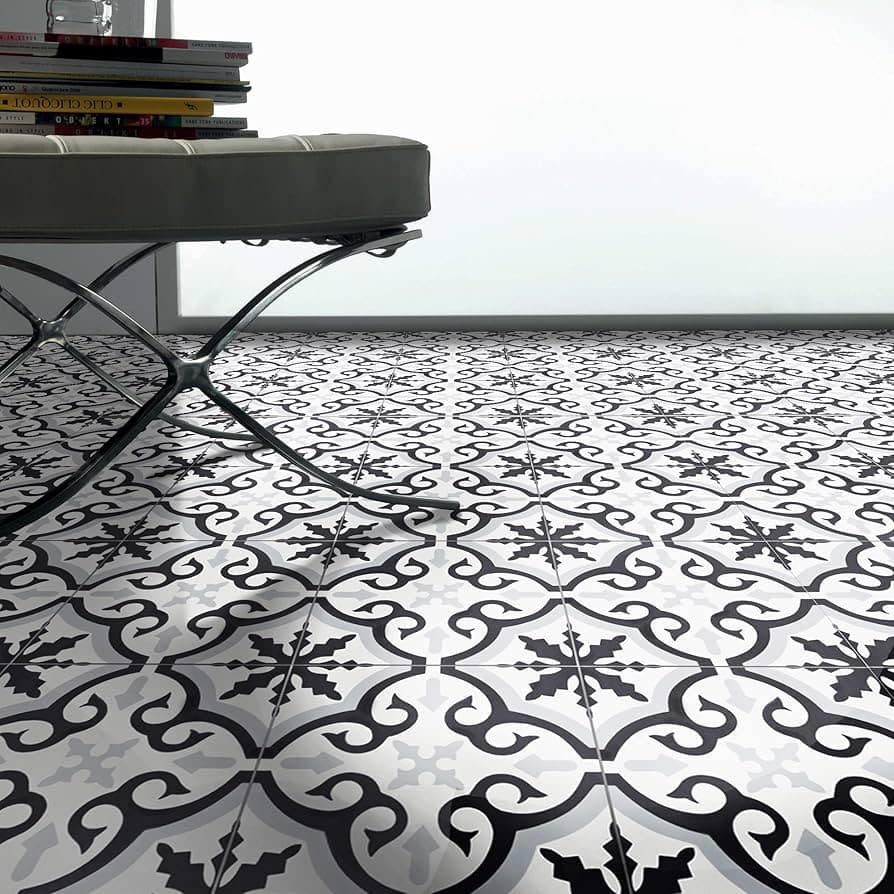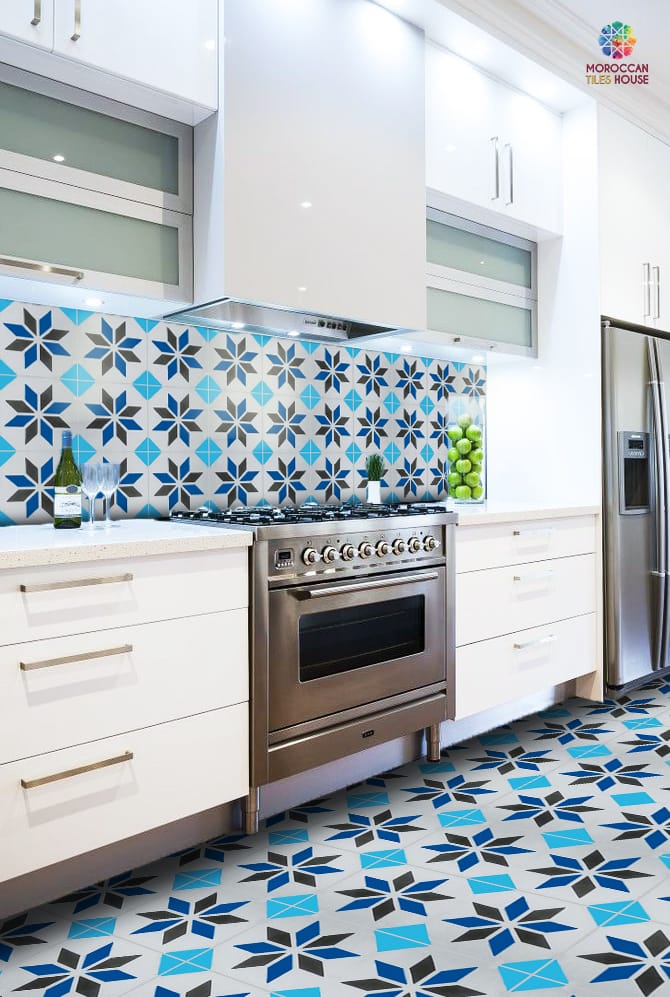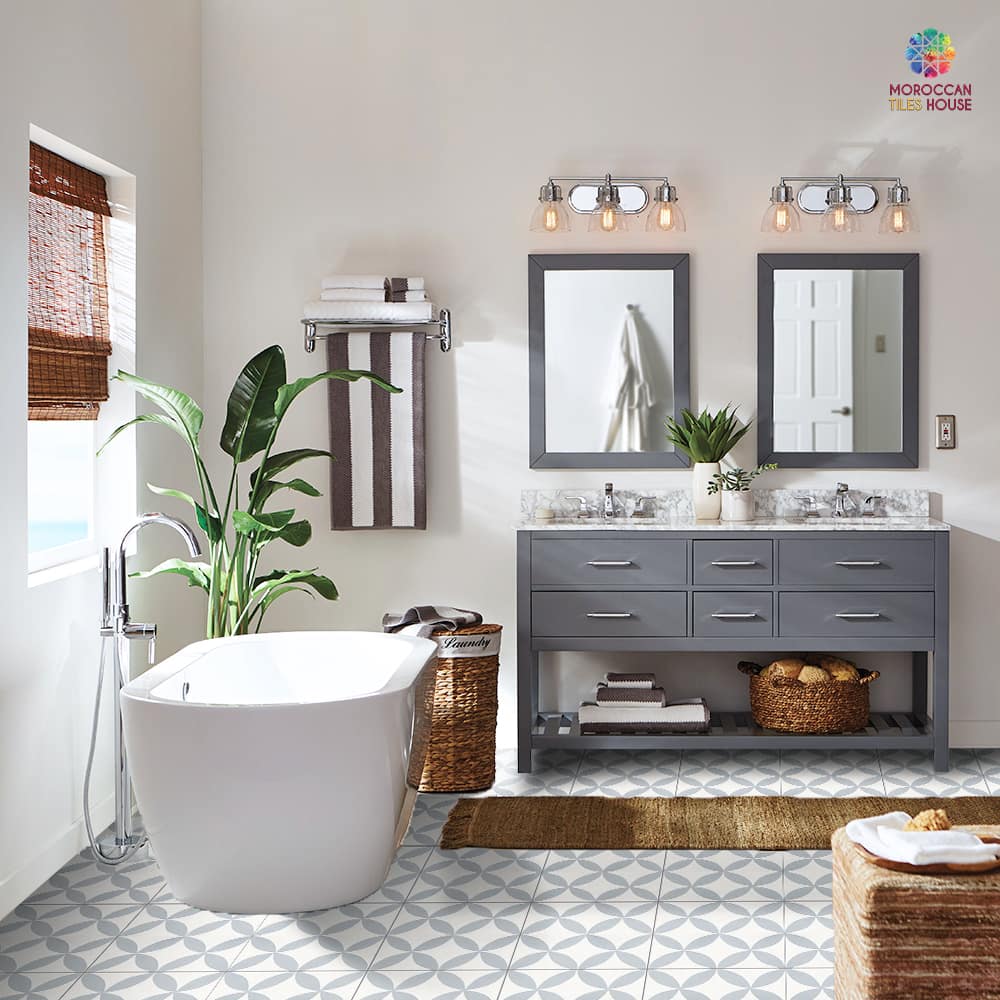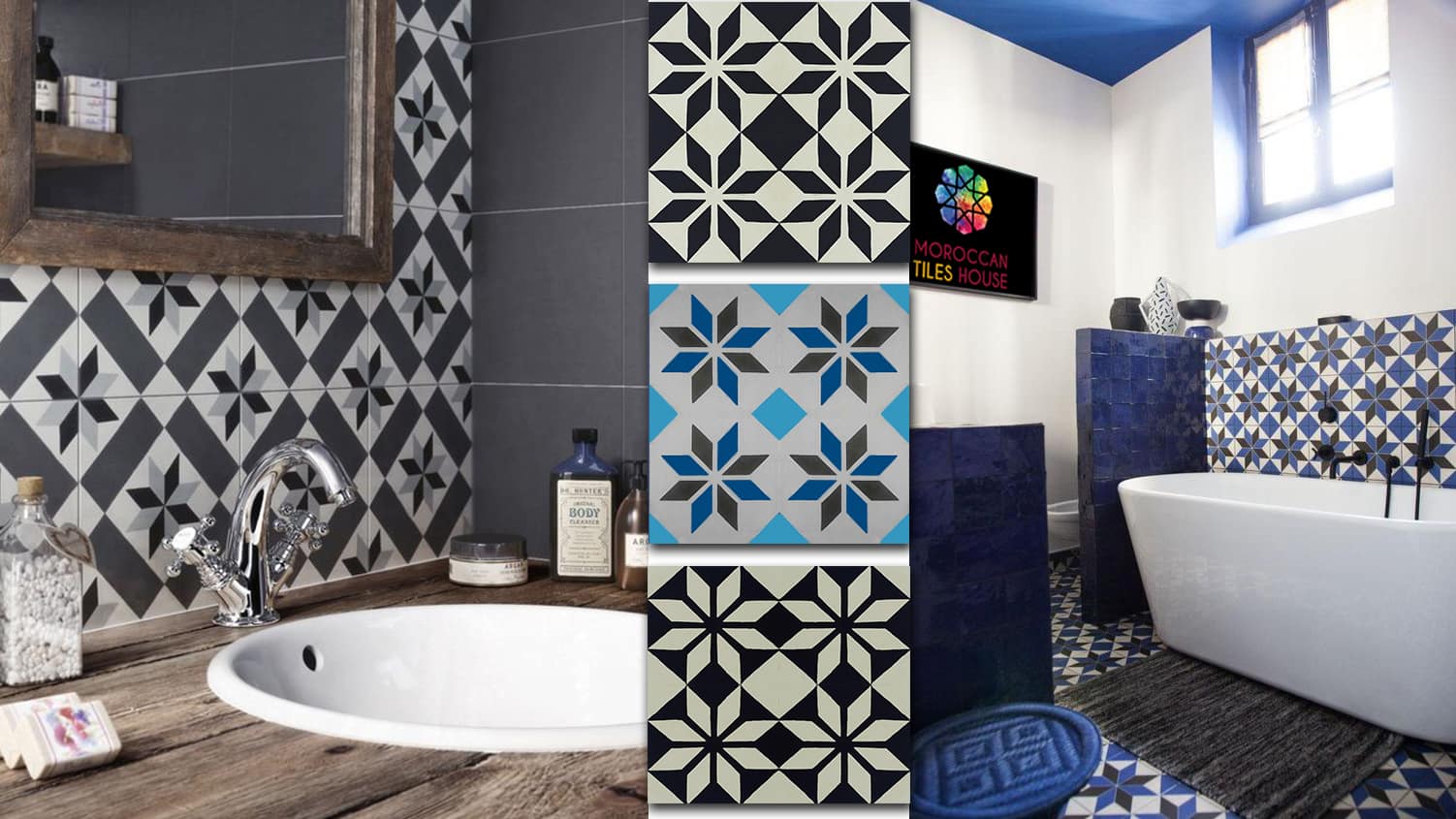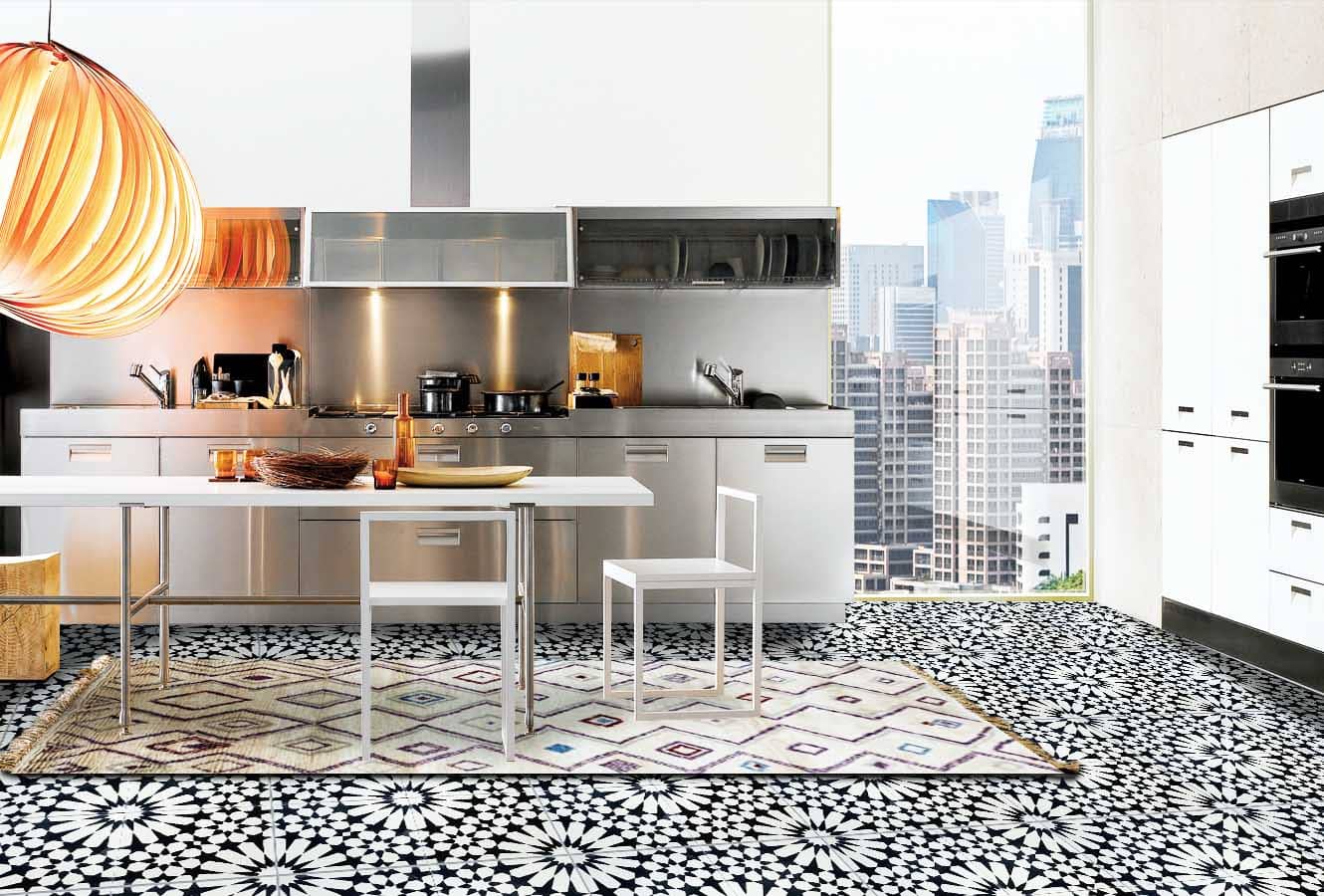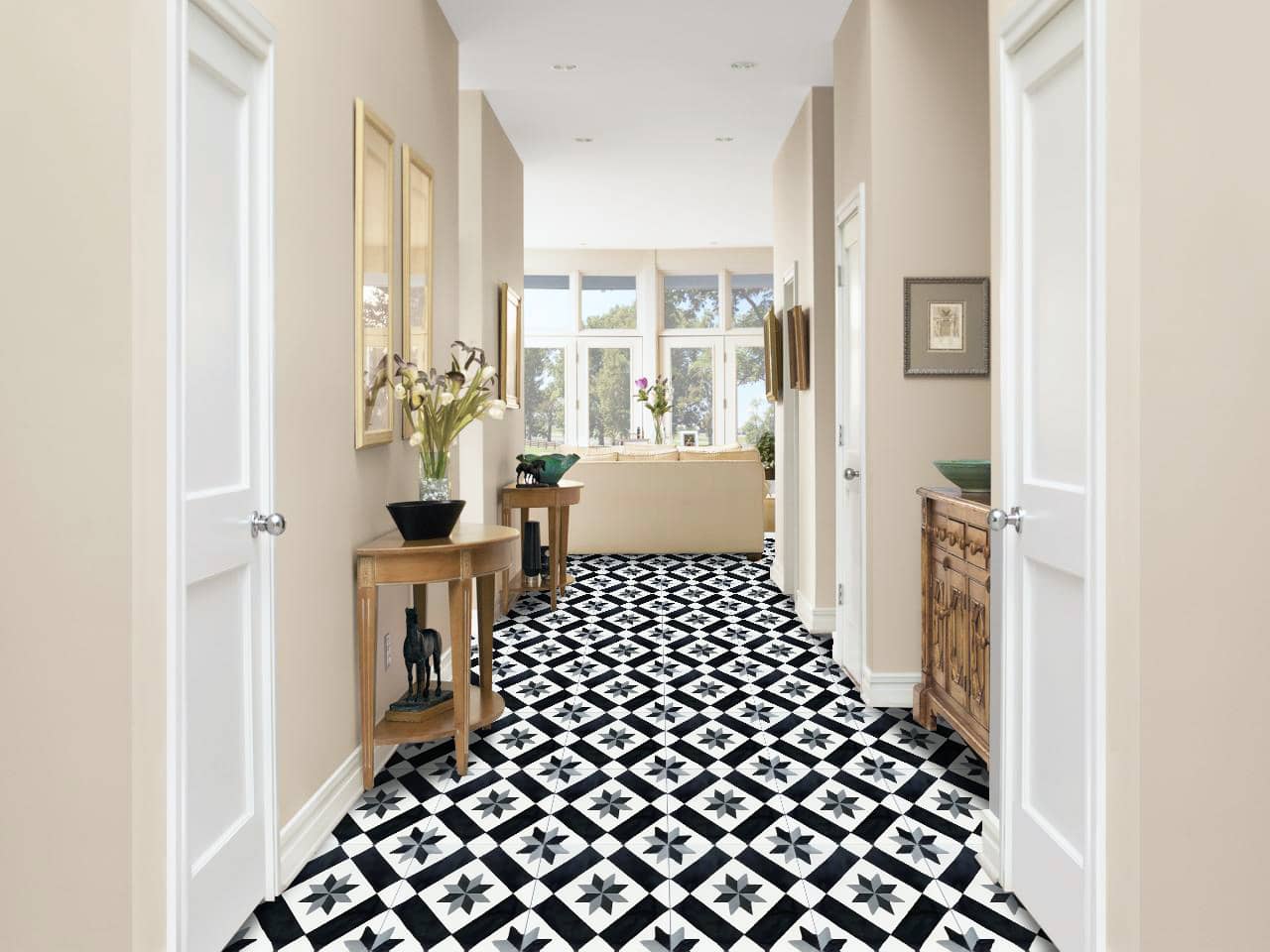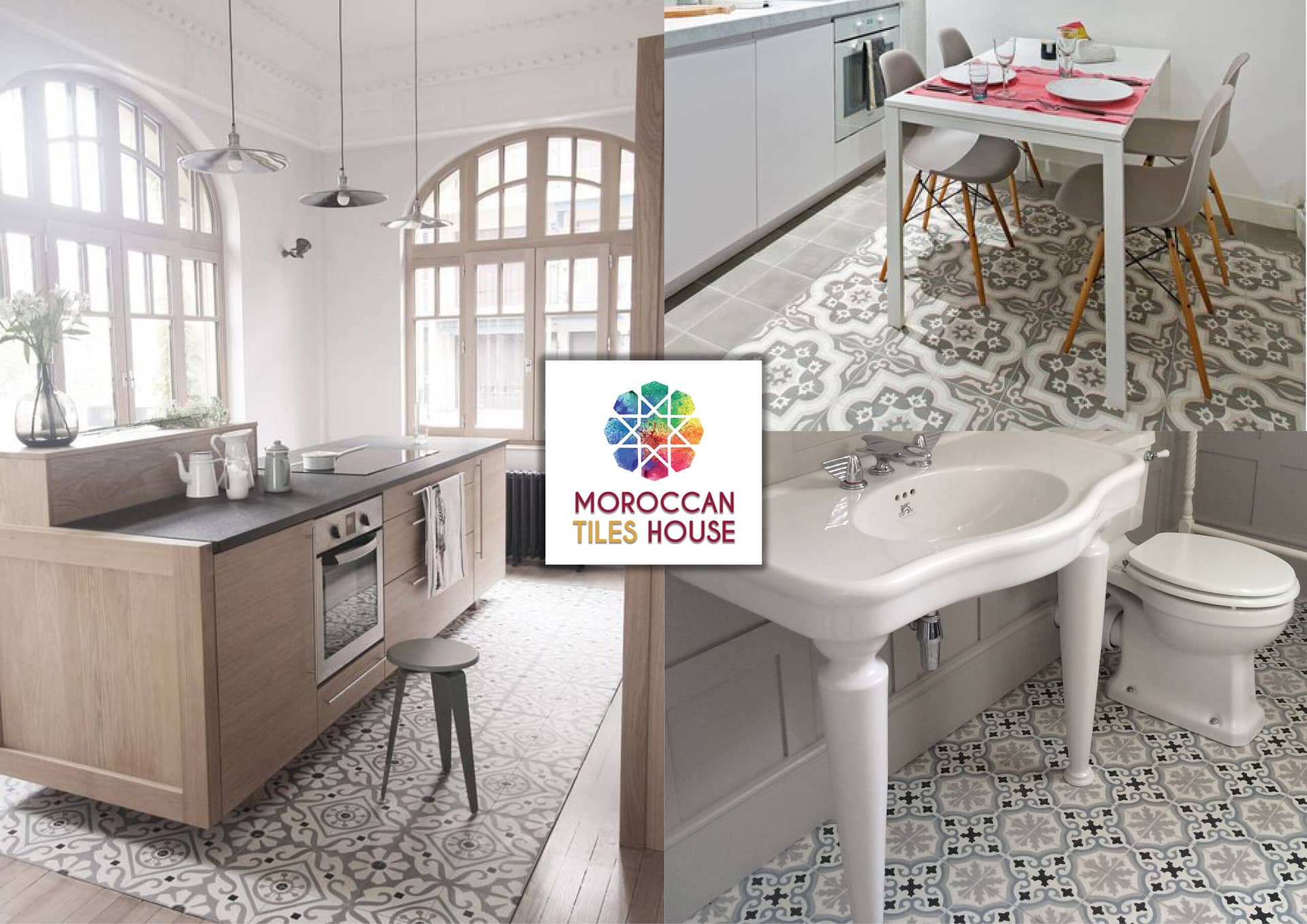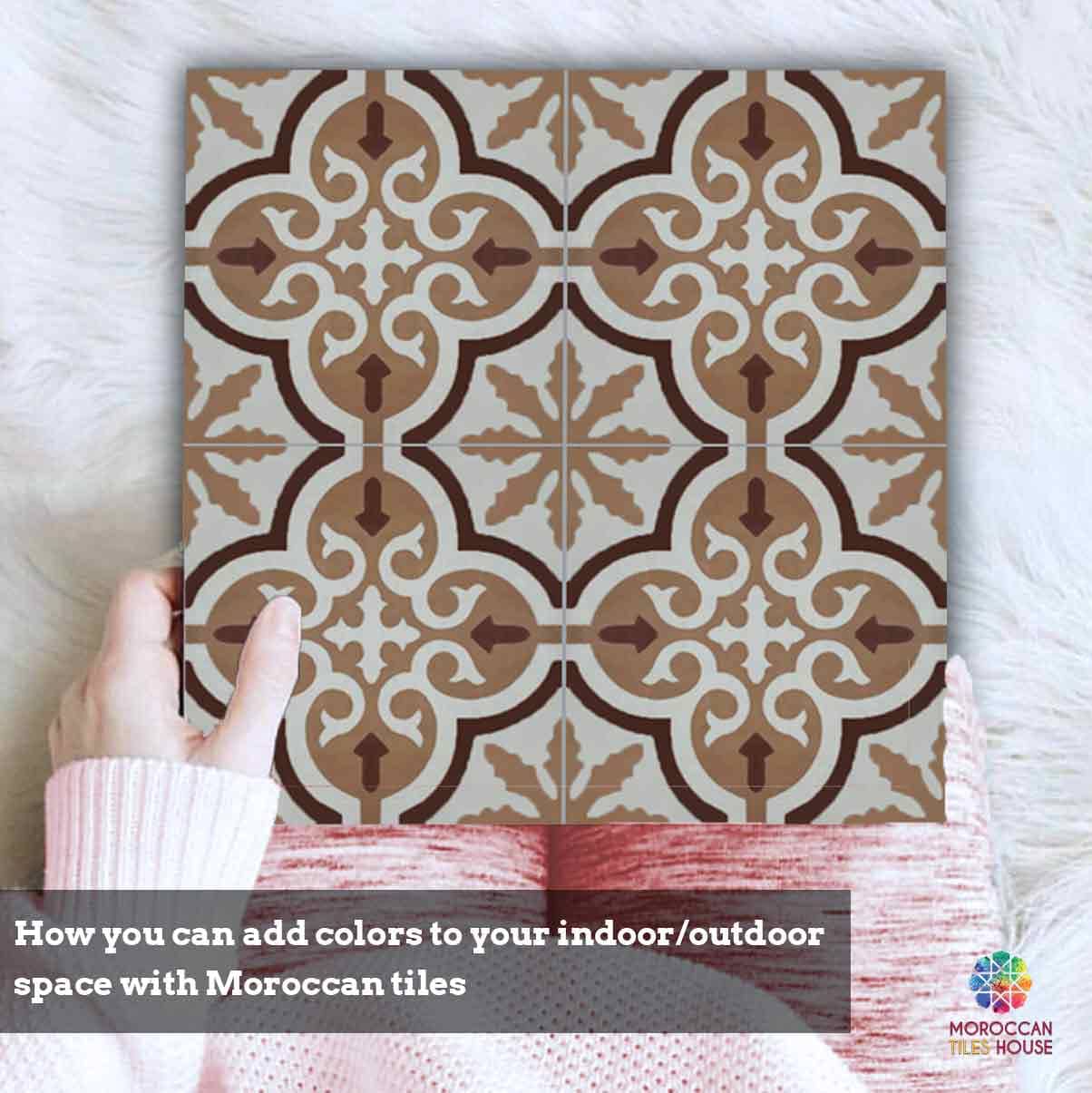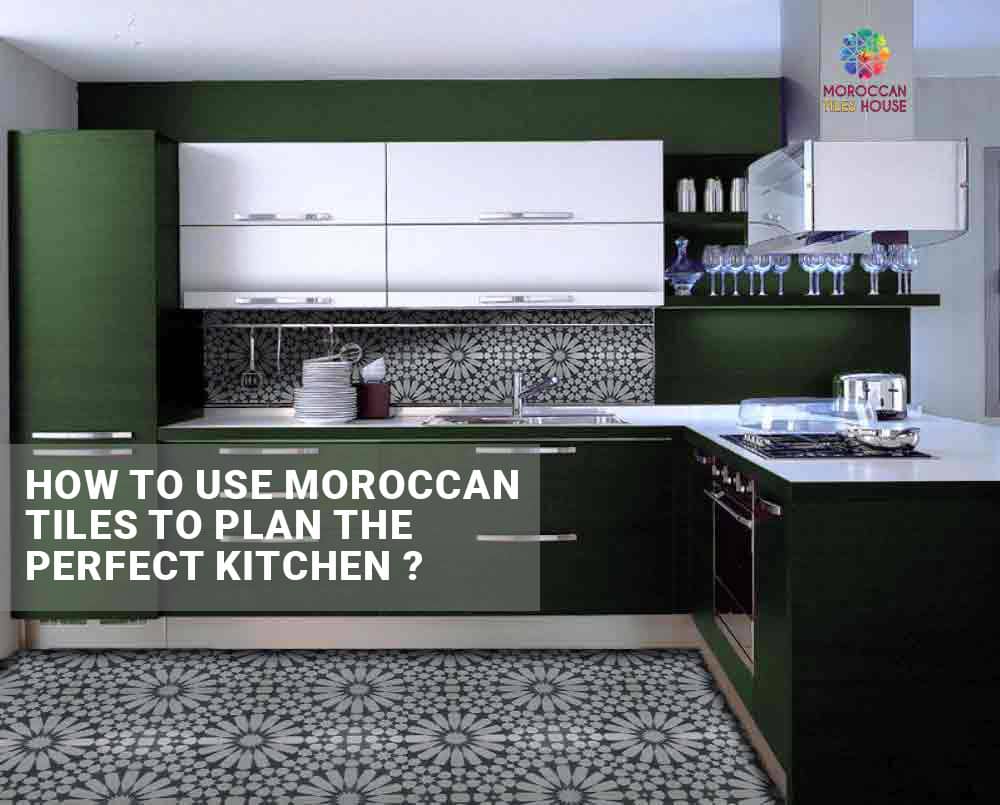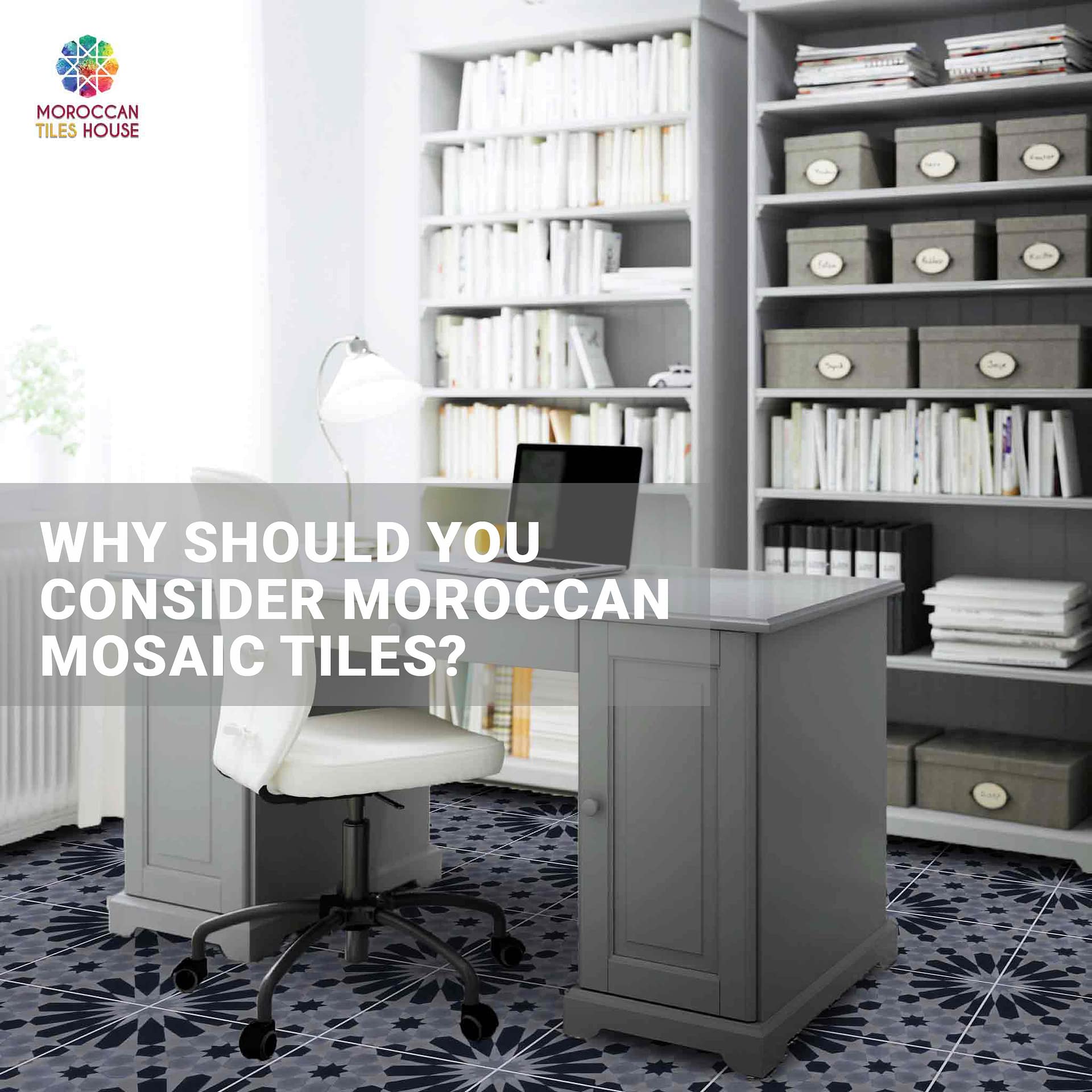Mosaic is a Moroccan handicraft technique of tile-work appeared in Morocco in the 10th century. In Arabic, zellige means little polished stone. The technique involves assembling different colored and shaped fragments of clay-based ceramic cooked in fire to became glazed tiles to form geometric patterns that can repeat endlessly. This method of making mosaic tile was created in Morocco, but very soon spread around the world as a form of art used in interior and exterior decorating. Moroccan mosaic can be shaped in different geometrical forms, such as squares, diamonds, stars, triangles … etc where those shapes of mosaic fragments can create a colored pattern assembled to be a mosaic tile.
In the 14th century, mosaic tiles were used for almost all available type of architecture, from palaces, fountains, and baths to patios and mausoleums.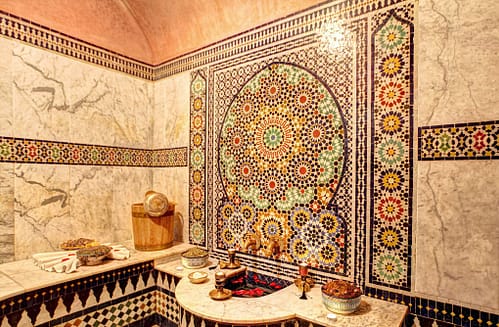 The process of mastering the craft of mosaic tiles is complicated and requires a large working force that has to be experienced, patient, and precise in order to follow the foundation of rules that is transmitted through the generations, the training process starts in childhood, exceptional skills and knowledge of mathematics and geometry are required in the craft of mosaic tiles.
The shaped fragment of mosaic tiles are glazed on one side, and on the other side, the geometric shapes cut from it are drawn with a brush. The next step involves a manual cutting of the shapes with a sharp hammer and chipping the extra parts away, and the edges then are precisely beveled into specific shapes, which requires an extremely steady hand and delicate precision. Moroccan mosaic fragment arranged in desired forms, creating the colorful patterns. It is important to make the finest joints possible, sealed in an iron rod to secure the solidity. Then, it is strengthened by cement, and the mortar is used to fix them, after which it is left to dry and form a plate. Once solid, it is ready to be put on walls and floor.
The process of mastering the craft of mosaic tiles is complicated and requires a large working force that has to be experienced, patient, and precise in order to follow the foundation of rules that is transmitted through the generations, the training process starts in childhood, exceptional skills and knowledge of mathematics and geometry are required in the craft of mosaic tiles.
The shaped fragment of mosaic tiles are glazed on one side, and on the other side, the geometric shapes cut from it are drawn with a brush. The next step involves a manual cutting of the shapes with a sharp hammer and chipping the extra parts away, and the edges then are precisely beveled into specific shapes, which requires an extremely steady hand and delicate precision. Moroccan mosaic fragment arranged in desired forms, creating the colorful patterns. It is important to make the finest joints possible, sealed in an iron rod to secure the solidity. Then, it is strengthened by cement, and the mortar is used to fix them, after which it is left to dry and form a plate. Once solid, it is ready to be put on walls and floor. 
 The colors blue, yellow, green, and red in mosaic tiles were only added in the 17th century. Every color symbolized something different in Sufi imagery. The basic colors of black, white, and brown represented the spirit. Red stood for dry and hot fire, blue for the dry and cold earth, yellow for hot and moist air, and green for cold and moist water.
Moroccan mosaic tiles are the art of geometry, with small fragments a piece of art can be created to decorate your home in a wonderful way.
The colors blue, yellow, green, and red in mosaic tiles were only added in the 17th century. Every color symbolized something different in Sufi imagery. The basic colors of black, white, and brown represented the spirit. Red stood for dry and hot fire, blue for the dry and cold earth, yellow for hot and moist air, and green for cold and moist water.
Moroccan mosaic tiles are the art of geometry, with small fragments a piece of art can be created to decorate your home in a wonderful way.

The beauty of the authentic traditional Moroccan mosaic

 The colors blue, yellow, green, and red in mosaic tiles were only added in the 17th century. Every color symbolized something different in Sufi imagery. The basic colors of black, white, and brown represented the spirit. Red stood for dry and hot fire, blue for the dry and cold earth, yellow for hot and moist air, and green for cold and moist water.
Moroccan mosaic tiles are the art of geometry, with small fragments a piece of art can be created to decorate your home in a wonderful way.
The colors blue, yellow, green, and red in mosaic tiles were only added in the 17th century. Every color symbolized something different in Sufi imagery. The basic colors of black, white, and brown represented the spirit. Red stood for dry and hot fire, blue for the dry and cold earth, yellow for hot and moist air, and green for cold and moist water.
Moroccan mosaic tiles are the art of geometry, with small fragments a piece of art can be created to decorate your home in a wonderful way.